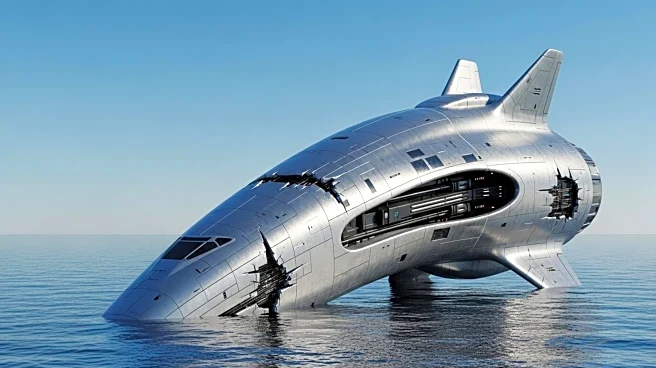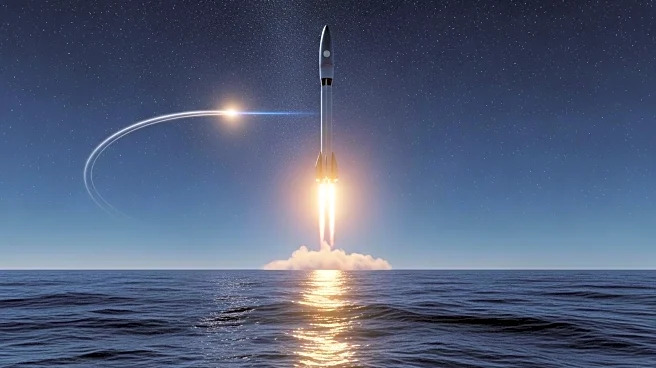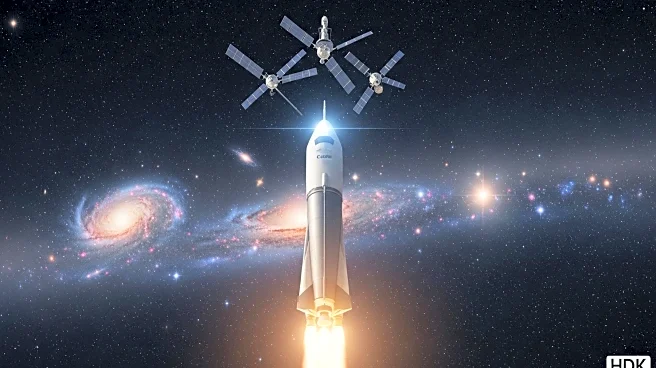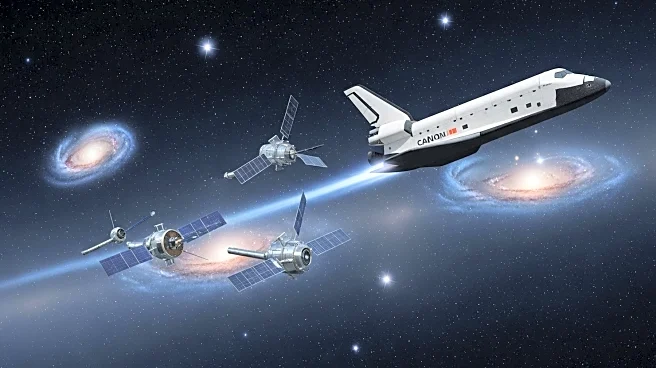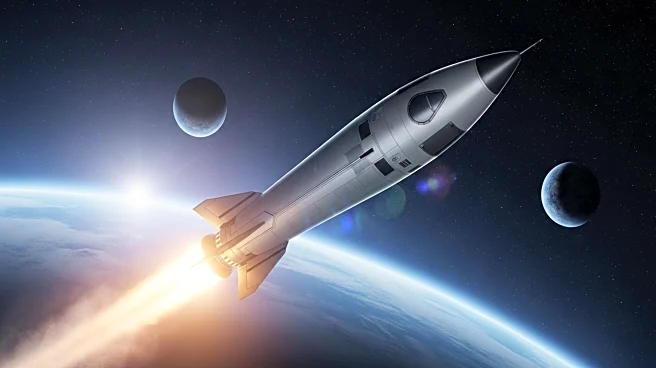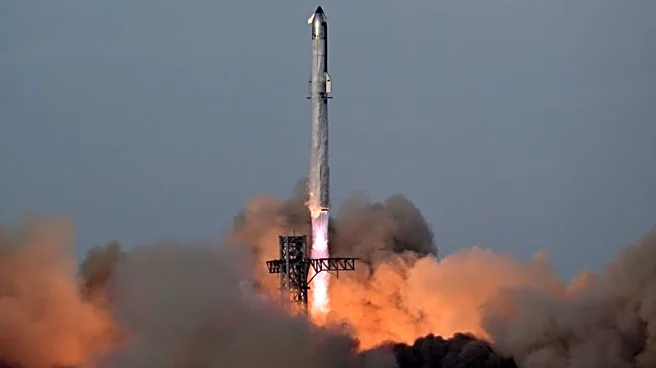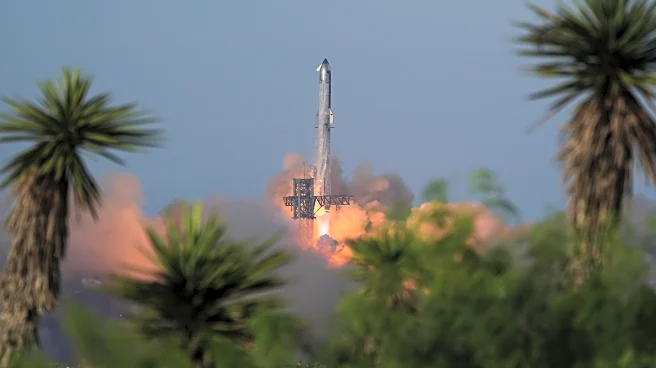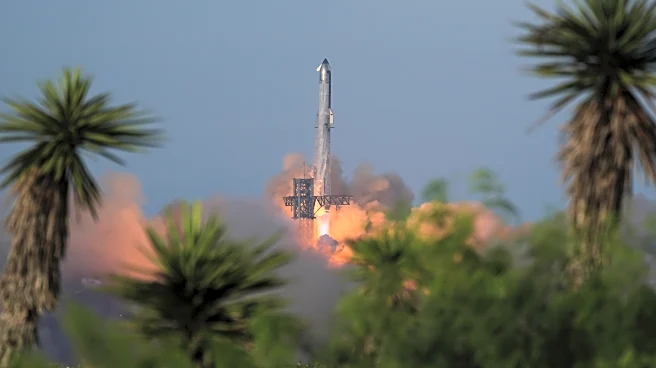What's Happening?
SpaceX's Starship Flight 10 successfully completed its mission objectives, including controlled splashdowns of the Starship upper stage in the Indian Ocean and the Super Heavy booster in the Gulf of Mexico. The mission, which launched from SpaceX's Starbase site in South Texas, showcased the spacecraft's capabilities despite sustaining visible damage during reentry. The Starship executed maneuvers to stress its flaps and landed approximately 3 meters from its targeted splashdown point. This marked the first successful splashdown of 2025 for the Starship, which had previously broken apart prematurely on all three of its test flights earlier this year.
Why It's Important?
The successful completion of SpaceX's Starship Flight 10 sets a new benchmark in spaceflight capabilities, marking a significant milestone in the Starship program. This mission demonstrated the spacecraft's ability to withstand harsh reentry conditions and execute precise landing maneuvers, which are crucial for future space exploration endeavors. The achievement underscores SpaceX's strategy of embracing failure to perfect technology, paving the way for potential trial missions to Mars as early as next year. The success of Flight 10 is a critical proof point in developing a fully reusable launch system, which could significantly reduce costs and increase the frequency of space missions.
What's Next?
SpaceX plans to continue testing the Starship's capabilities, with hopes to launch its first trial missions to Mars as early as next year. The company aims to further refine the spacecraft's reusability and operational efficiency, potentially leading to more frequent and cost-effective space missions. The success of Flight 10 may accelerate SpaceX's timeline for sending unmanned Starships to the Moon and Mars within the next two years.
